Written by Elizabeth Beers, WSU Extension Entomology. May 8, 2017.
With cherry bloom behind us, and straw coming up rapidly, it’s time to finalize plans for trapping spotted wing drosophila (SWD), and thinking about which trap/lure combination might work best for your situation. We’ve come a long way since the ‘apple cider vinegar in a deli cup’ days, and now have quite a selection of commercial products to choose from in both traps and lures.
But let’s back up a second: why should we monitor for SWD? The main reason is that growing seasons vary tremendously in the level of SWD pressure, which is likely related to overwintering survival, which in turn is likely related to winter temperatures. We don’t have a prediction system, but experience suggests that ‘normal’ or extreme cold temperatures will reduce the overwintering population to the point where they have trouble rebuilding numbers in the spring. Our early varieties may be off the tree and in a supermarket somewhere before SWD builds to damaging numbers. We don’t know what the magic number is, but having a sensitive and reliable monitoring method is the first step.
We have enough experience with the commercial products to tell us how they will work in the field. The trap and lure are separate components, and you can mix and match if you wish. For the lures, the first question is synthetic or liquid bait? The synthetic lures are very handy, and only need to be changed once every 4 weeks. They come neatly packaged, are easy to handle, and are not susceptible to spillage or accidental dilution by the irrigation system. Using liquid baits means handling volumes of fluid both to and from the orchard. In both cases, expect a lingering aroma in your truck as you move these materials around. Even with the synthetic lures, you still need liquid in the form of a ‘drowning fluid’ which kills, captures, and preserves the specimens until you can look at them. The difference is that the drowning fluid can be a simple mixture of water, surfactant (liquid dish soap), and preferably some preservative (borax or sodium benzoate).
You can inspect the contents of the traps in the field (hot!) or in the comfort of your office (air-conditioned). If you have lots of traps to tend, there are labeling and transport logistics for the latter. But, you have to choose whatever works best for your operation. Having some form of magnification is essential for determining SWD females – the males have distinctive, and fairly unique, spots on the wings. Unfortunately, the females lack those spots, so you need to look at the ovipositor – if it has heavy serrations, it’s an SWD.
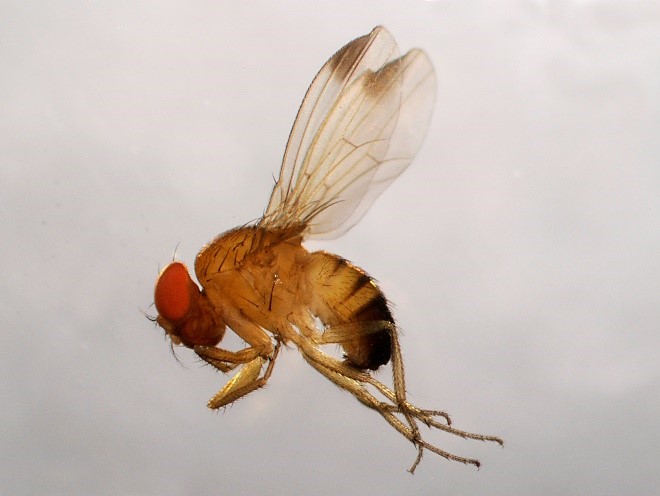 |
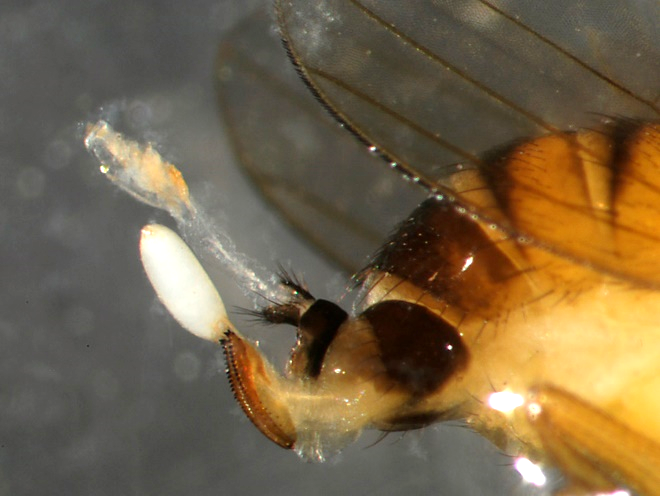 |
| SWD Male; photo credit Beers, WSU | SWD female; photo credit Beers, WSU |
Both lures and baits can be put in a jar-style trap. The old deli cup had a friction fit lid, and was decidedly on the flimsy side, disintegrating after a season in the field (they were meant to be disposable drink cups, after all). The commercial traps are sturdier and can be re-used for a number of seasons. The screw-top lid helps ensure a tight seal in the field and protects against accidental spillage during transport. They are about a one-quart capacity, and typical bait loads are 200-300 ml (6.7-10.1 fl oz). Weekly trap inspection is the norm for all bait-lure-trap systems. In the case of liquid baits, the bait is changed weekly. In the case of the synthetic lure, the drowning fluid is changed weekly (the lure itself once/month).
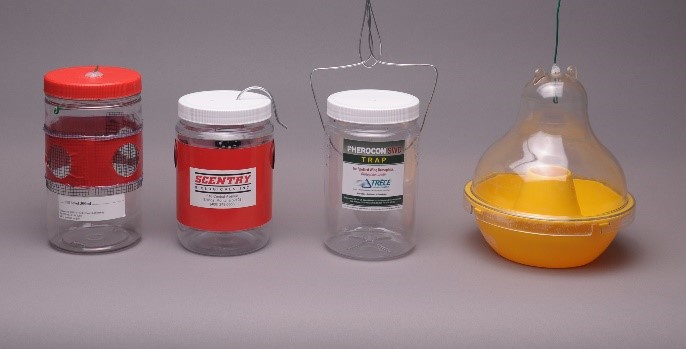 |
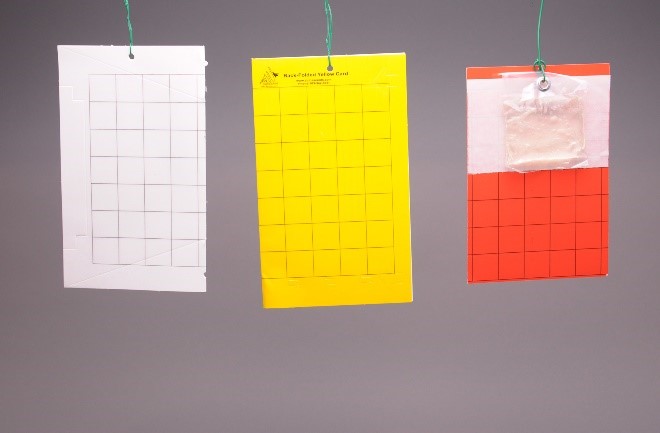 |
| Jar traps | Sticky traps |
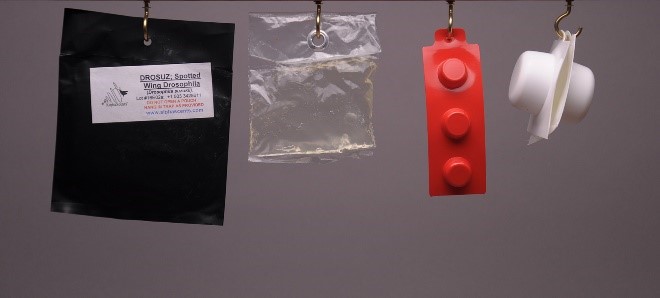 |
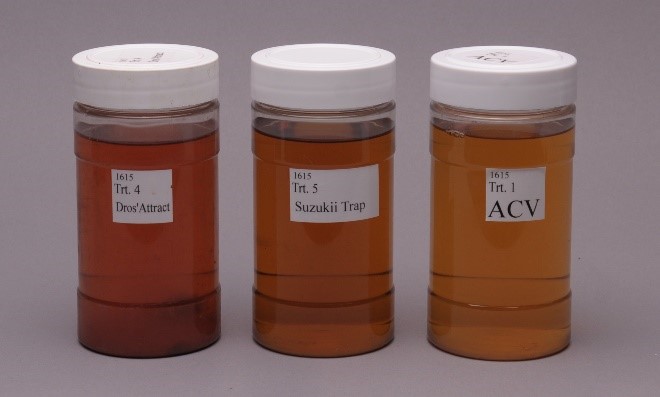 |
| Synthetic lures | Liquid baits |
A departure from the jar trap is the sticky trap. The idea of a sticky trap isn’t new to insect sampling, we’ve been using it for decades, usually with pheromones as lures. It was fairly novel to SWD monitoring until a few years ago for obvious reasons: you can’t use a liquid bait with a sticky trap, so the invention of a synthetic lure made this possible. These traps have some serious advantages over the jar traps in ease of use: you can scan them in the field fairly readily, skipping the sorting of murky liquid trap contents.
So what trap/lure combinations works best? There is no ‘perfect’ system, there are multiple options which may fit better or worse with your operation. In a comparison of lures/baits (all in a jar trap), the Scentry lure has been consistently strong in terms of high catches of SWD, with the AlphaScents lure also performing well. Unfortunately, the lures that are most attractive to SWD are also most attractive to other Drosophila – this is where a trap become user-unfriendly. We are used to moth pheromone lures which are pretty species-specific – with the exception of a few odds and ends, everything in your trap will be the target species. Not so with Drosophila: the non-targets may outnumber the target species 1,000 to 1 early in the season (and, there are 9 other Drosophila species commonly found in traps). Some years are worse than others, but this is an ongoing stumbling block to convenient and efficient monitoring.
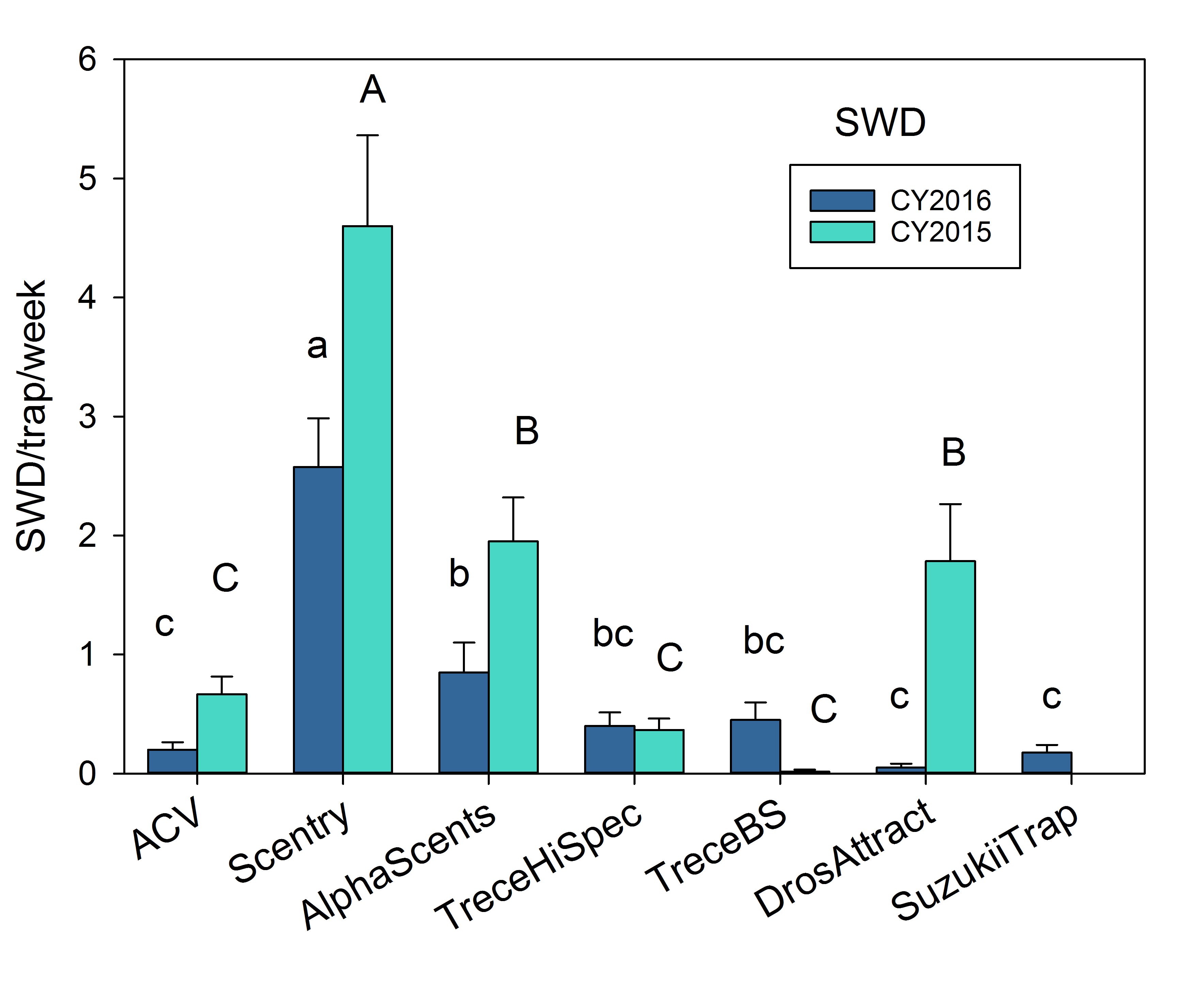 |
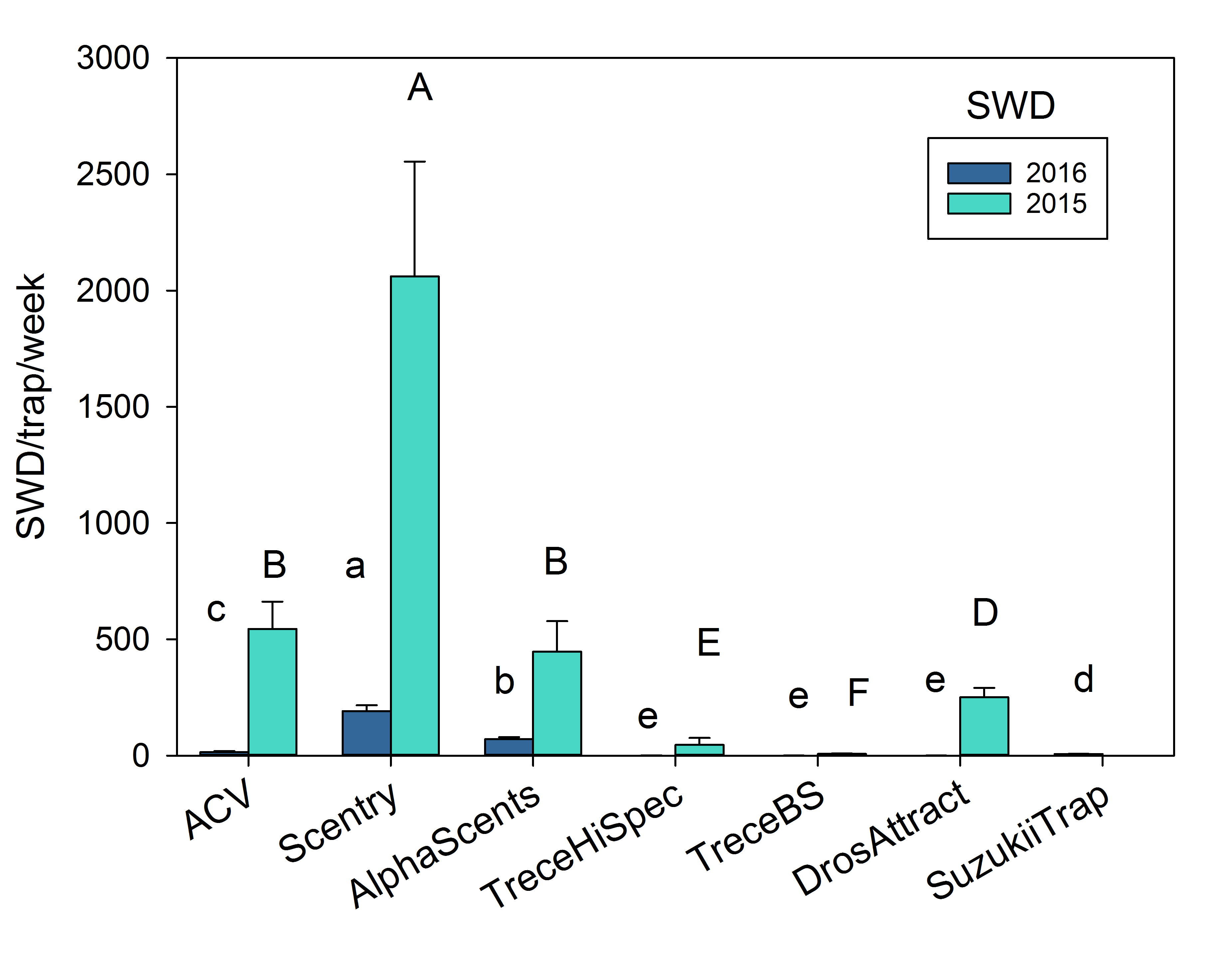 |
| SWD captures, 2015-2016; Beers WSU. | Non-target Drosophila captures, 2015-2016; Beers WSU. |
Another interesting aspect of sticky traps is they appear to be male-biased – the easiest sex to see on a sticky trap (or in any trap for that matter). They also appear to have the least amount of by-catch, so separating out other Drosophila is less of a problem. These are two factors that favor user-friendliness of sticky traps. Combining an effective lure (like AlphaScents or Scentry) with a selective trap (like a sticky trap) may be the most user-friendly combination we have found to date.
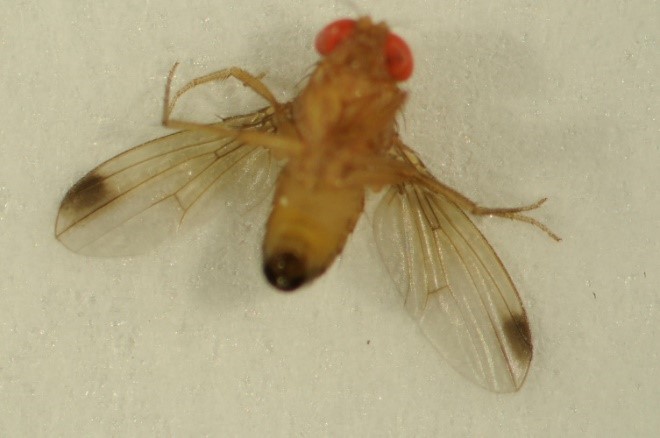 |
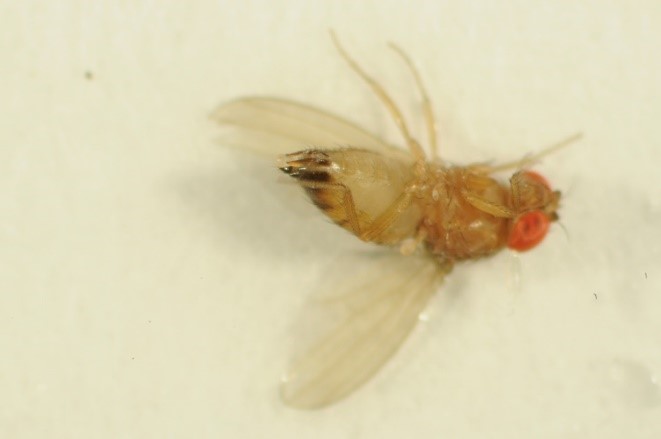 |
| Male SWD; photo credit Beers WSU. | Female SWD; photo credit Beers WSU. |
So what’s the bottom line? You need to add SWD to your monitoring program to become familiar with seasonal patterns on your farm. If you knew you had an effective lure and caught no SWD before harvest, we hope at some point to say with confidence that protective sprays are not necessary. Likewise, trapping can alert you to an unusually high pressure or early year like we had in 2015, and make sure you get the coverage you need.
Contact
WSU Extension Scientist, Entomology
ebeers@wsu.edu
(509) 663-8181

